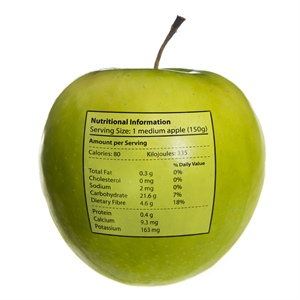Rating the Celebrity diets
THE 200 POINT SYSTEM
Considering the variety of different diets available, how so are we to be aware of
what works and what’s safe? The only way to be sure is always to
discover the author’s background and the investigation behind
the diet’s methodology. Every balanced nutrition should give you a
background the write and his/her credentials and
knowledge of the fields of nutrition and biochemistry.
However, a good vast resume does not always mean a credible and
safe diet. Nonetheless it does suggest, at least, that this author has
some knowledge of nutrition. Providing research behind the
diet proves that this diet is not something the author
invented, providing that the analysis is just not self-serving and
altered to suit a hypothesis.
Some diets may not need a great deal of tests and studies
behind them, as they use
fundamentals. Such as, many women’s magazines
have articles on dieting and weight-loss, but they are
commonsense suggestions that most people concerned
about weight should know already: “Eat smaller meals”, “cut
down on sugar and fat”, etc., are typical philosophies. More
structured diets should give some scientific advantages for its
suggested success, preferably case studies and research
performed on everyday test subjects, as well as athletes.
Since we’ve got established the significance of eating a
balanced diet relating to selecting healthy foods and
obtaining RDA minimums, it will be possible now to rate the
diets relating to those specific criteria. Start with a
score of 200 and subtract 10 points through the total for every
statement below where the diet concedes. The best diet
should conserve a score of 200, but a score of 160 or
greater is acceptable.
1. This diet won’t add food groups in adequate
amounts. Some diet plans eliminate one or more of your food
groups. Never deduct 10 points in case a food group’s nutrients
(e.g., carbs, proteins, fats, fiber, vitamins, and minerals) are
adequately substituted with this of another food group.
2. The diet will not provide a minimum of 45% of that calories from
carbohydrate sources. To be able to prevent ketosis, at the least
150g of glucose/day becomes necessary. That’s 33-50% of total
calories for a 1200-calorie diet. Do not forget that is
the minimum. For highly active individuals, that amount
should increase to 60% sometimes, i.e., right after
exercise.
3. The carbohydrate content exceeds 20% concentrated
sugars. At the very least 80% of carbohydrate sources need to be
complex, and preferably in the form of vegetables, seeds,
and legumes.
4. The protein content exceeds 30%. Quite a high protein
intake is unnecessary, it places additional strain for the
urinary system, plus its an undesirable method to obtain energy. Thirty
percent one is the most than adequate, even for growing children
and teenagers. A common group that will need higher protein
intake are the ones who recently suffered a severe injury (e.g.,
leg amputation), infection, or surgery. However, these
individuals will probably be beneath the proper care of your physician with a
special high protein diet.
5. Protein content makes up about 15% or diminished amount of total calories.
Although unnecessary in large amounts, protein still has
many vital functions, including tissue repair as well as the
formation of enzymes.
6. Fats exceed 30% of total intake. Besides helping the
risk of coronary disease, high fat diets weren’t
demonstrated to decrease weight as good as other methods
of ‘proper’ eating.
7. Total fat consumption is below 15% of total calories.
Fat in moderate amounts is important to get a proper dieting, and
this type of diet provides taste to numerous foods. Fat intake below
15% for very long periods, for many of us individuals, is unrealistic.
Fat intake that’s lacking may also be detrimental to children
and teenagers who require ample kcalories for continued
growth.
8. Total fat consumption is fewer than 25% essential fatty
acids, and saturated fats one is the most than 30% of total fat
consumption. Deduct 10 each.
9. The diet plan does not suggest common foods, meaning
foods you need to be in a position to obtain at any supermarket or
market.
10. The foodstuff for that diet are very pricey or monotonous.
Some diets require the getting ‘their’ foods or
expensive ‘organic’ foods only obtained through health food
stores. Some foods taste so bad these are difficult to
tolerate repeatedly (e.g., seaweed). Deduct 10 per.
11. Dieting is made up of an inflexible meal plan. The diet program
would not permit substitutions or deviations, requiring a
person to reside in under ‘house arrest’ with just one food
selections everyday.
12. Dieting provides lower than 1200 kcalories daily.
Fewer than may your bodys basic functions probably are not
getting the energy, minerals and vitamins were required to work
properly, along with the dieter almost is definite to experience hunger all
any time. Diets below 1200 kcalories really should be reserved for
those beneath the supervision of an dietitian or licensed
physician.
13. The diet requires the usage of supplements. Should the diet
provides adequate energy and it’s healthy,
supplements are unnecessary. ‘Fat accelerators,’ including
ephedrine, may increase the rate of weight-loss, however the diet
will ascend to its very own merit. Some diet clinics
promote a vast assortment of herbal preparations and fat
accelerators, and this also the place these clinics make their
money – not for their knowledge and ability as nutritionists.
14. The dietary plan isn’t going to recommend a realistic weight goal.
Diets shouldn’t be promoting one’s body on the Greek god or perhaps a
supermodel. They will not be suggesting that your person
lose 100 pounds (even when 100 pounds overweight). Nor
should diets recommend fat loss below an ideal
weight.
15. The dietary plan recommends or promotes in excess of 1-2
lbs/week fat reduction. Do not be ready to lose more than 1-2
pounds of fat each week – it is physically impossible unless
chronically obese, at which point 3 pounds may be
possible. If a lot more than two pounds is lost a week, the
body change as a result of a loss of water and/or muscle tissue.
Gimmicks that advertise Ten pounds in Fourteen days are either
simply not true in any other case something rather than fat will be
lost. Also remember how the more fat any person wishes to
lose, plus the less you yourself have, a lot more difficult and
slower it can be to shed additional fat.
16. The diet program would not include an evaluation of food habits.
Dieting really should be painstaking process with which anyone
changes normal dietary habits. It shouldn’t include looking
for quick fixes and quick plans promising short cuts and
extreme changes – an individual could not stick with these
programs and such diets fail long-term. The
volume of kcalories eaten, and the food selections and their
amounts, need to be reevaluated all the time…
perhaps once every 1-2 months to determine the program’s
effectiveness.
17. Physical exercise will not be recommended in the
insurance policy for proper fat loss. Weight loss occurs twice as
fast with exercise, and without exercise you will find there’s greater
tendency to lose lean muscle mass as well as fat. This can be
not ideal.
Presentation of VARIOUS DIETS
Low Carbohydrate Diets: Ketosis occurs, and this presents
identical problems as fasting. Once glycogen stores are
spent (which happens quickly with athletes and those that
exercise every day), glucose must be made from protein
sources, then there is greater wear on the kidneys being a
result. Even over a high protein diet, some protein will probably be
extracted from body tissues in an effort to produce enough energy
for any nerves and regular activity. The start of
ketosis is surely an indication that this process initiated a policy of which is
not only a positive aspect, regardless of what pro-high-fat
authorities indicate.
Great weight reduction with a low-carb weight loss program is evident as a consequence of
the truth that carbs hold water in the muscles at a ratio of 1:3.
As carb intake decreases then so, too, does water retention.
Much water flushes resulting from deficit of glycogen to maintain
water molecules. Moreover, by increasing protein intake,
excess nitrogen flushes with a lot more water since the
kidneys use water to dilute the power of nitrogen.
Once leaving a low-carb diet and the muscles refill with
glycogen, fluid concentrations increase and the dieter
regains some of the weight.
Low calorie diets of 400-600 kcalories that consist primarily
of protein have a similar problems as fasting and
low-carbohydrate diets: proteins are used for energy and
fat loss comes largely from water. Low-cal diets must
be supervised properly with a healthcare professional and only
being a last measure for those who cannot appear to lose fat by
other methods. However, even the individuals often
regain a lot of how much back after they resume a
balanced diet.
Beverly Hills Diet – cutting down on calories consisting of grapefruit, eggs, rice,
and kelp; it truly is deficient in minerals and vitamins.
Cambridge Diet – quite a low kcalorie (300-600 kcal/day);
protein/carb mixture with mineral imbalances; the dieter is
in close proximity to fasting.
Complete Scarsdale Diet – the dietary plan is unbalanced
nutritionally; some days are calorically restricted; the dieter
alters portions of carbohydrate, protein, and fat; this diet
consists of low carbs (20-50 g/day), and high fat and
protein; the diet plan includes a high meat (fats and
cholesterol) content.
Dr. Atkin’s Diet Revolution – this diet is unbalanced
nutritionally; some days are calorically restricted; the dieter
alters portions of carbohydrate, protein, and fat; carbs are
minimal (20-50 g/day), whereas fat and protein are high;
there may be high meat (fats and cholesterol)
consumption.
Dr. Linn’s Last Chance Diet – the diet program contains a really low
kcalorie intake (300-600 kcal/day); it is made up of
protein/carb mixture that has a mineral imbalance; the dieter is
in close proximity to fasting.
Dr. Reuben’s The Save Your Life Diet – this is usually a calorically
dilute diet including things like high fiber (30-35g/day); dieting is
lower in fat and animal products; there exists poor absorption of
minerals owing to a lot high fiber.
“Fake” Mayo Diet – the diet plan includes grapefruits, eggs,
rice, and kelp; it truly is deficient in nutrients and vitamins.
F-Plan Diet – that is a calorically dilute diet composing of
high fiber (30-35g/day); it can be reduced fat and animal products;
there exists poor absorption of minerals because of a lot of
fiber.
LA Costa Spa Diet – the dietary plan promotes fat loss of 1-1_
lbs/day; types of plans of 800, 1000, and 1200
kcal/day constructed from 25% protein, 30% fat (mostly
polyunsaturates), and 45% carbohydrate; the diets includes
several food groups.
Medifast Diet – the dietary plan is balanced nutritionally, but
provides only 900 kcal/day; utilization of liquid formulas makes
the diet program monotonous and expensive.
Nutrimed Diet/Medifast Diet – this is the nutritionally balanced
diet, nonetheless it supplies only 900 kcal/day; the use of liquid
formulas makes the diet plan monotonous and expensive.
Optifast Diet – the diet plan is nutritionally balanced, but
supplies only 900 kcal/day; make use of liquid formulas makes
this diet monotonous and expensive.
Pritikin Permanent Weight-Loss Diet – this is the nutritionally
unbalanced diet; some days are calorically restricted; the
dieter alters portions of carbohydrate, protein, and fat; the
diet is made up of high protein (100 g/day); unless the foodstuffs
properly chosen, it might be reduced in vitamin B12.
Prudent Diet – this can be a balanced, low kcalorie (2400
kcal/day) diet for men; it truly is reduced cholesterol and saturated
fats; only 20-35% calories are produced from fat
through an emphasis on protein, carbohydrates, and salt; there
is ample usage of seafood, and saturated
fats are substituted with polyunsaturated fats.
Speedy weight loss Diet – the diet program is unbalanced
nutritionally; some days are calorically restricted; the dieter
alters portions of carbohydrate, protein, and fat, although
you can find low carbs (20-50 g/day), and high fat and protein;
there may be high meat consumption (saturated fat and
cholesterol) with this diet.
San Francisco Diet – the dietary plan begins at 500 kcal/day,
including things like two meals a day of 1 fruit, one vegetable,
one slice of bread, and two meat exchanges; the 2nd
week limits carbohydrates, primarily food from the
meat group and with some eggs and cheese, and a few
vegetables; week three includes fruit; in week four there may be
an increase in vegetables; week five the dieter add
fat-containing foods (e.g., nuts, avocados); week six
includes milk; week seven includes pastas and bread,
in which the diet is maintained at about 1300 kcal/day; this
diet avoids the problem of bad fats and cholesterol.
Slendernow Diet – this diet is unbalanced nutritionally;
some days are calorically restricted; the dieter alters
portions of carbohydrate, protein, and fat; the protein is
generally high (100 g/day); unless foods are properly
chosen, there may be a deficiency in vitamin B12.
Weight-Watchers Diet – this diet is balanced nutritionally, at
about 1000-1200 kcal; use of high nutrient-dense foods are
consumed; economic and palatable food helps it be one among
by far the most successful diets without real health conditions.
Wine Diet – the diet plan concerns 1200 kcal/day, containing 28
menus together with a glass of dry table wine at dinner;
contour medicinal the different parts of wine, it truly is believed
that men and women reduce portion sizes when liquid is
consumed by using a meal; the diet plan is lower cholesterol and
bad fats; there’s a concentrate on fish, poultry, and veal with
moderate variety of red meat.
Yogurt Diet – the diet plan is made of two versions, being
900-1000 kcal/day, and 1200-1500 kcal/day; plain low-fat
yogurt is the main dairy dish, consumed at breakfast, lunch,
so that as a bedtime snack; the dietary plan is high in protein, and it’s also
low in cholesterol, saturated fats, and delicate carbohydrates.
This article include a very interesting stuff about the diet programs like leaky gut and the other you are leaky gut syndrome i think it helps alot to all or any individuals facing problem about diet.
-
Weight Loss Criticism – How To Deal With Criticism From Others
One of the problems plus-sized women run up against is
-
PCOS Weight: Sugar Cravings
For women with Polycystic Ovarian Syndro
-
How To Stay Motivated Using A Printable Weight Loss Chart
A weight loss chart serves as a guide when you embark on your own pers
-
Finding Your Motivation
In a recent ?experiment? performed by a Yale economics professor Barry
-
Low Carb-ers: Self Imposed Weight Loss Guinea Pigs, Ground Breakers and the Health Conscious Today
Most low carb-ers know - its a well known fact that the weight los
-
How To Choose A Gym
One common phenomenon in the United States today is that many people a
- DON'T MISS
- Are Your Weight Loss Efforts Doomed To Failure
- Benefits of fruit peels
- A Low-Carb Diet and Workout Combo to Burn Body Fat
- Is Phen375 The Best Type Of Fat Loss Pills?
- Speed Your Metabolism And Your Weight Loss With Herbs
- 7 Healthy Diet Tips For Effective Weight Loss
- Best Abs Workout for Women
- Workouts To Lose Stomach Fat Fast
- Balanced Diets For Natural Weight Control
- Modify Your Exercise Plan With Age




